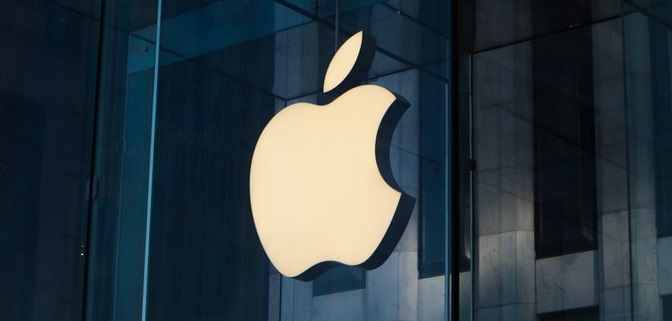Global equity markets are mostly lower on the final trading day of the week following negative Q3 earnings reports from two of the world’s largest (by market capitalisation) stocks, Apple and Amazon after the US equity close on Thursday. Apple shares are current down between 3-4% in pre-market trade, while Amazon shares are down closer to 5%. The former reported a much larger than expected miss on iPhone sales revenue as the chip shortage continues to bite (Apple said $6B in sales was lost as a result) and CEO Tim Cook said the problems would only worsen this quarter as the Christmas holidays approach. Meanwhile, Amazon reported a drop in profits that it said would get worse in Q4, as a tight US labour market pushes employee compensation higher and amid the impact of global supply chain disruptions. Given that Apple and Amazon combine to make up about 10% of the weighting of the Nasdaq 100 index, NQ futures are underperforming ahead of the US open and are down nearly 1.0%.
The earnings reports from the two US tech/consumer goods behemoths appear to trigger a broader sense of concern about the impact of current trends in the global economy (supply chain issues, shortages, tight labour markets) on corporate bottom lines; E-mini S&P 500 futures are down about 0.5% in pre-market trade and over in Europe, the Stoxx 600 is down about 0.4%. Do note that prior to the deterioration in sentiment on the back of post-close earnings, the S&P 500 managed to post another record high close on Thursday at not far below 4600, while the Nasdaq 100 index managed to clinch a new intra-day record peak at just under 15.8K. Analysts have note that many of the problems facing companies such as Amazon and Apple are temporary in nature and as the global economy rebalances supply and demand in the coming months, are likely to fade. A number of Apple and Amazon investors have emphasised that the short-term disruptions faced by these companies do nothing to change their long-term bull thesis.
Sentiment was strong during yesterday’s US session despite the release of the first estimate of US GDP growth in Q3 coming in a little weaker than market participants had been expecting at an annualised quarterly pace of 2.0%. Median economist forecasts had been for 2.7%. But analysts remain confident that the pace of US growth can improve in Q4 of this year as Covid-19 transmission rates across the country (a key driver of the deterioration in consumer confidence and the broader growth slowdown in Q3) have dropped significantly at the start of this quarter and vaccination rates have risen. Moreover, weekly jobless claims showed initial jobless claims falling to a fresh post-pandemic low of 281K, a third consecutive week below the 300K mark and now not far at all from the around 200-250K level that is traditionally seen as consistent with a labour market that is in full health. Indicators of continued labour market recovery add to the reasons why US growth should be strong in Q4.
Elsewhere in global markets, the euro was a strong performer yesterday in wake of ECB President Lagarde’s post-policy decision announcement press conference. Analysts noted that the ECB has now significantly shifted its tone on inflation given that it has now admitted that the spike in inflation is going to be longer lasting, and is going to have greater upside risks, than previously thought. Some saw this as one step towards an eventual admission that policy tightening may be needed to address rising inflation risks. Note that Lagarde remained keen, however, to impress that the ECB still judged the spike in inflation to be transitory given that many of the drivers of higher prices (spike in energy costs, supply chain disruptions, a German VAT hike) would fade in time and that risks of secondary inflation effects (like rising inflation expectations leading to workers demanding higher wages in anticipation of further future inflation, thus creating a self-fulfilling prophecy) remain low. When pressed to address the hawkish pricing in money markets, where rate hikes are seen as soon as Q4 2022, Lagarde said that, given the transitory nature of inflation, the conditions for rate hikes would not be met by the end of 2022 nor soon thereafter – some market participants did not view these remarks as strong enough pushback against money market pricing, another potential reason for EUR strength. But EURUSD is slipping from yesterday’s highs at just under the 1.1700 level, where the cross also ran into resistance in the form of the 50DMA, and is now back at the 1.1650 level, little changed on the week. The single currency did not seem to pay too much attention to this morning’s flash Eurozone CPI report, which showed inflation in October at 4.1% YoY versus forecasts for 3.7%, nor on a decent first estimate of Q3 GDP growth of 2.2% QoQ.
Looking at bond markets, we are currently seeing quite a sharp recovery in long-term US real yields, with the 10-year TIPS surging back towards -0.95% having been as low as -1.15% earlier in the week and this has pushed the nominal 10-year yield back above the 1.60% mark, a decent rebound from earlier weekly lows under 1.55%. One might have thought this would help the US dollar, but an even bigger move higher in real yields is being seen in European rate markets, with the German inflation-adjusted 10-year yield now at -1.8% having been under -2.0% earlier in the week; a good indicator that market’s deemed yesterday’s ECB event to have been a hawkish one. Without the help of favourable moves in yield differentials, the DXY remains subdued around the 93.50 mark, having set fresh lows for the month on Thursday. FX markets are otherwise pretty tame this morning, with GBP, CHF, CAD and AUD all flat on the session versus the buck, while JPY and EUR are a tad softer. In commodity markets, oil has recovered somewhat since yesterday’s fairly sharp deterioration in sentiment that saw WTI drop as low as the mid-$80.00s. This was a decent area of support, technicians noted, meaning dip-buying interest likely played a role, and there was also commentary from Algeria (an OPEC+ member) that the cartel should not increase production at a faster pace than the 400K barrels per day per month currently scheduled.
In terms of the rest of the session; we have more important US data coming out at 1330BST in the form of September Core PCE (expected at 3.7% YoY), which is the Fed’s favoured measure of inflation, as well as September Personal Income and Spending numbers. At 1330BST the monthly Canadian GDP report (this one for August) is out and may get some attention from Loonie traders following this week’s hawkish BoC meeting that signalled rate hikes could come as soon as April 2022. Otherwise, it’s likely to be a quieter end to the week.




